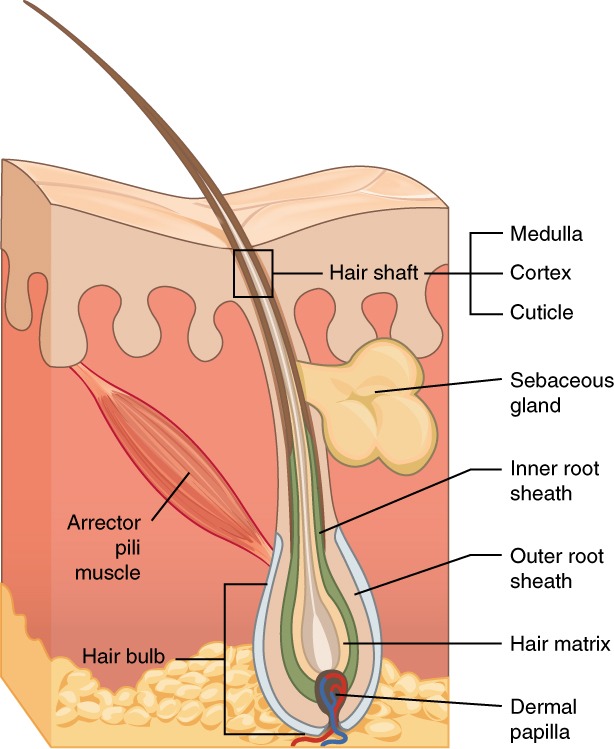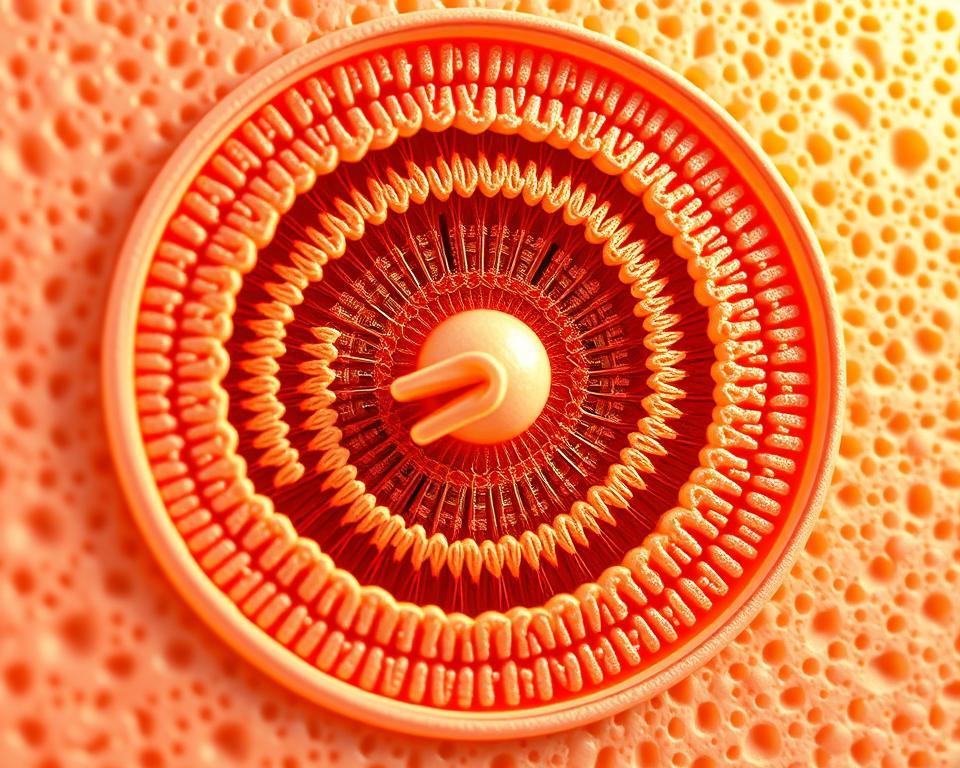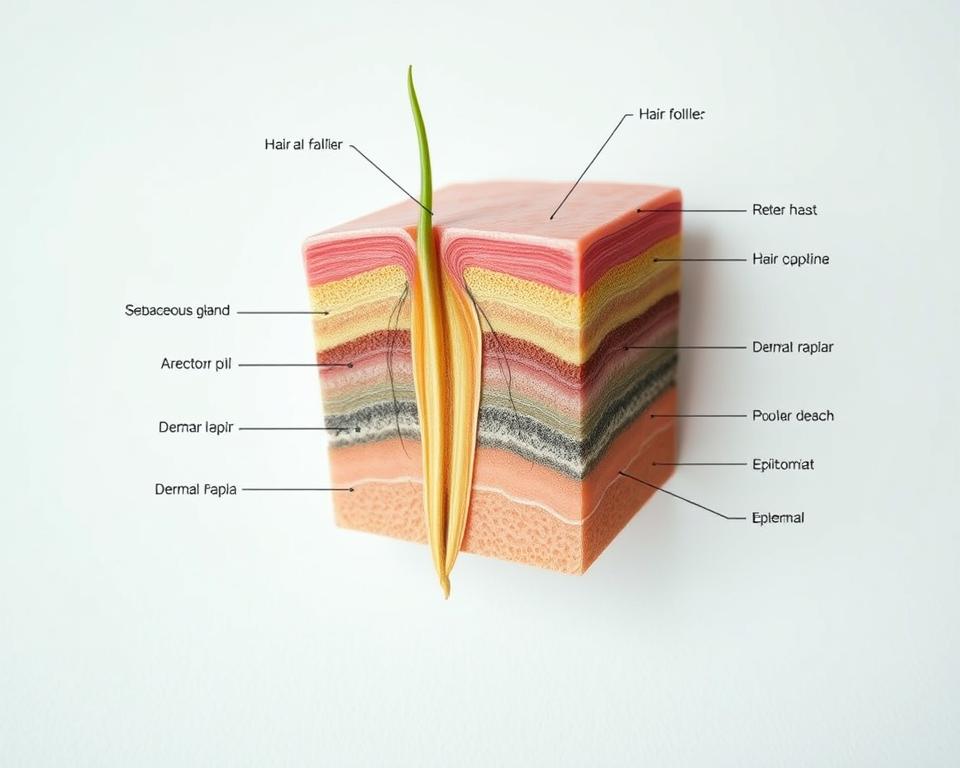The Hair Shaft: What You See Is What You Get
The hair shaft is the visible part of your hair – the part that grows out of your skin. It is the part of the hair that you can touch, style, and groom. Each hair shaft is essentially a strand of protein, primarily made up of a tough protein called keratin. Each hair shaft it like a tree with roots and a trunk:
The roots are the living parts of the hair, hidden beneath the skin’s surface. They’re where all the growth and nourishment happen.
The trunk: This is the hair shaft – the part we’re talking about today. It’s the sturdy, visible part that extends from the roots.3
Layers of the Hair Shaft
The hair shaft has three main layers, like a layered cake. They are the:
Cuticle –
the outermost layer of the hair shaft.
Cortex
outer layer
Medulla
or inner layer.
Table 1: Part Of The Hair Shaft
| Feature | Cuticle | Cortex | Medulla |
| Layer | Outermost | Middle | Innermost (sometimes present) |
| Function | Protects the inner layers | Gives hair strength, color, and texture | May contribute to thickness and texture (function not fully understood) |
| Appearance | Shiny and smooth when healthy | Makes up the bulk of the hair shaft | Can be continuous, fragmented, or absent |

The Cuticle (Outer Layer)
The cuticle is the hair’s protective shield. It is made up of overlapping cells, like shingles on a roof. These cells are tough and help to protect the inner layers of your hair from damage caused by things like heat, chemicals, and everyday wear and tear. A healthy cuticle makes hair look shiny and smooth.
These things can damage the cuticle:
- Heat styling: Blow dryers, flat irons, and curling irons can all damage the cuticle.
- Chemical treatments: Hair dyes, perms, and relaxers can also weaken the cuticle.
- Environmental factors: Sun exposure, wind, and pollution can take a toll on your hair’s outer layer.
When the cuticle is healthy, your hair looks shiny, smooth, and feels soft. But when it’s damaged, your hair can appear dull, rough, and prone to breakage.
How to take care of the cuticle
- Use gentle shampoos and conditioners: Look for products that are free of harsh chemicals.
2. Avoid over-styling: Give your hair a break from heat styling and chemical treatments whenever possible.
3. Protect your hair from the elements: Wear a hat or scarf when you’re out in the sun or wind.
The Cortex Of The Hair Shaft (Middle Layer)
The cortext of the hair shaft is the thickest layer and makes up most of the hair shaft. It is the location where you’ll find the pigments that give your hair its color. The cortex also gives your hair its strength, elasticity, and texture (whether it’s straight, wavy, or curly).
The Medulla Of The Hair Shaft (Inner Layer)
The medulla of the hair shaft is the innermost layer. It is not always present in every hair, especially in fine or light-colored hair. The medulla’s exact function is still a bit of a mystery, but it might play a role in hair’s thickness and texture.
Hair Growth Is A Constant Cycle
Hair doesn’t just grow continuously. It goes through cycles, like seasons. The cycles are anagen, catagen, and telogen.
- Anagen (Growth Phase)
- This is the active growth phase.
- Hair cells divide rapidly.
- The hair shaft becomes longer.
- This phase can last for several years.
- Catagen (Transition Phase)
- This is a short transition phase.
- The hair follicle shrinks.
- Hair growth slows down.
- Telogen (Resting Phase)
- This is the resting phase.
- The hair follicle is inactive.
- The hair eventually sheds.
Factors Affecting Hair Growth
Many things can influence hair growth. These including:
- Genetics: Your genes play a big role in hair thickness, growth rate, and whether you’re prone to hair loss.
- Hormones: Hormones like testosterone can affect hair growth patterns.
- Age: Hair growth can change as you get older.
- Nutrition: Eating a balanced diet with enough vitamins and minerals is important for healthy hair.
- Stress: High stress levels can sometimes lead to hair loss.

Hair Care Tips for Men
Here are a few tips to keep your hair looking its best:
- Wash regularly: But don’t overdo it, as this can strip your hair of its natural oils.
- Use gentle products: Look for shampoos and conditioners that are free of harsh chemicals.
- Avoid heat styling: Too much heat can damage your hair.
- Eat a healthy diet: Nourish your hair from the inside out.
- Manage stress: Find healthy ways to relax and unwind.
In Conclusion
The hair shaft might seem simple, but it’s a complex structure with a vital role to play. Understanding its anatomy and how it grows can help you take better care of your hair and keep it looking healthy and strong.


